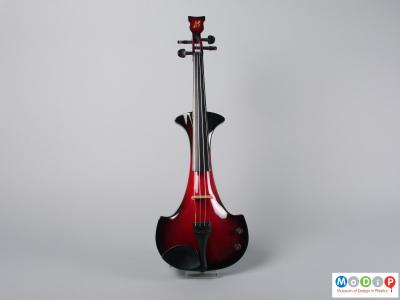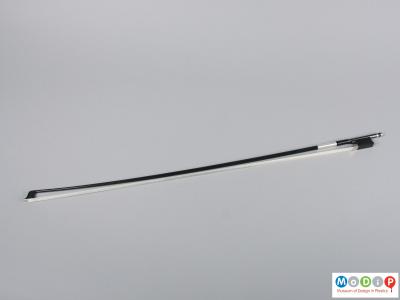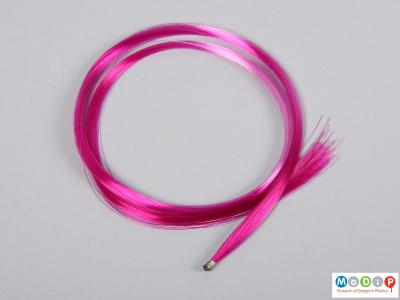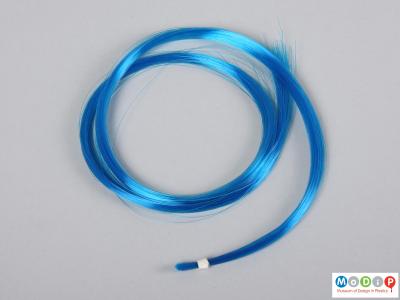The materials from which a violin is made affect the sound quality it is capable of producing. Traditionally violins are made from specially selected seasoned wood. This four-string electric instrument was made in the UK by Bridge Violins in 2017 (1), it has a hollow body made of Kevlar and carbon fibre composite giving it a high strength to weight ratio, and is designed to provide an easy transition from an acoustic violin to an electric instrument. The resonant hollow body generates a responsive sound similar to a traditionally constructed instrument, and allows for low volume practice without the need for headphones or amplifiers. This instrument combines modern composite materials with strategic use of wood for parts such as the bridge, neck, endpin and pegs.
Sound is produced by dragging a bow across the strings, causing them to vibrate. Traditional materials used in bow construction are wood and horse hair. The makers of the Sound Choice bow (2) are proud of its ethical, vegan approach and it compares favourably with a high quality traditional bow. The stick is made from carbon fibre composite, replacing the now rare and protected Pernambuco wood. The mother of pearl slide has been replaced by an ebony one, whilst the ivory or bone tips have been replaced by ones made of acrylonitrile butadiene styrene (ABS). A polyurethane thumb pad replaces one traditionally made from reptile skin and animal glues have been replaced by a low melting-point resin adhesive. Finally, the horse hair has been replaced by Coruss synthetic hair.
Coruss synthetic bow hair (3 & 4) was created by the Orchestre de Chambre de Toulouse together with researchers from the French textile industry, responding to a demand for an alternative to horsehair. The exact material from which it is made is a closely guarded secret, but its desirable properties are that it is more resistant to wear thus reducing problems of breakage, is little affected by changes in temperature and, being hydrophobic, it is affected less by humidity than natural materials. In blind tests many musicians were unable to distinguish Coruss hair from horsehair and others actually
preferred the sound.




